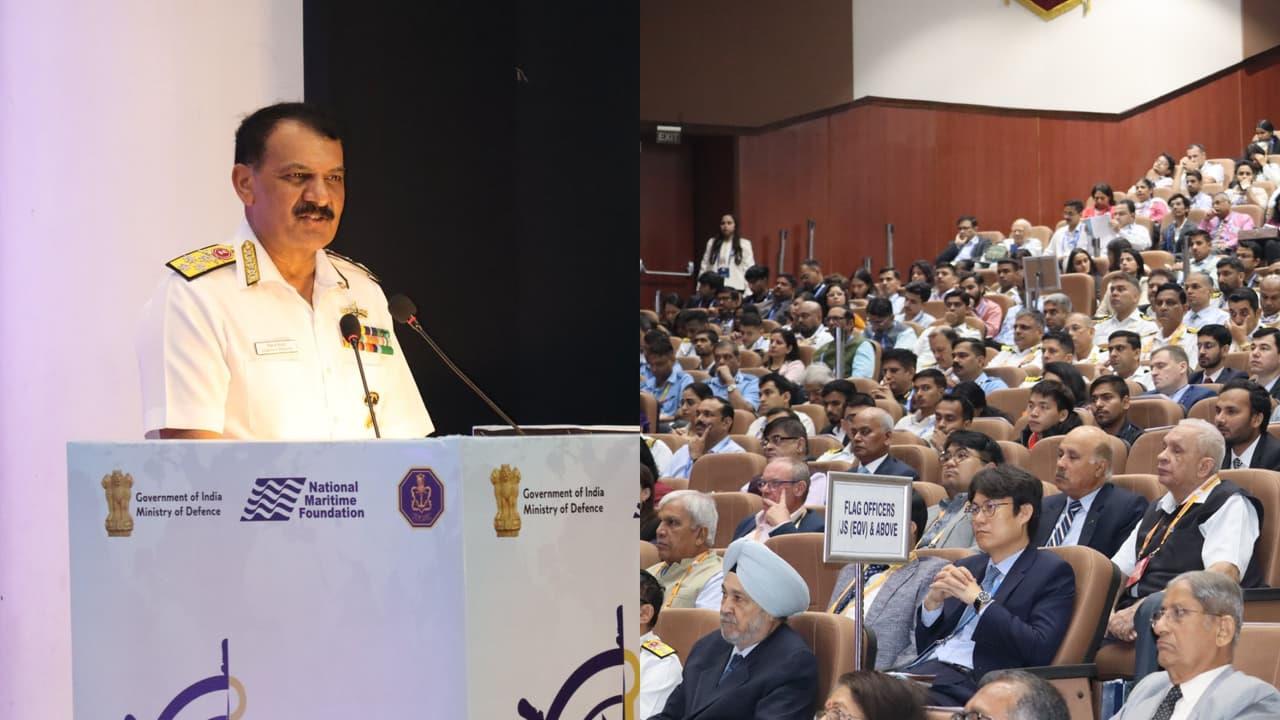
Indian Navy's IFC-IOR To Get Big Boost, More Than Triple Int'l Liaison Officers: Admiral DK Tripathi At IPRD 2025
New Delhi: Indian Navy is building what Chief of the Naval Staff Admiral Dinesh K Tripathi called a“shared architecture of trust” across the Indo-Pacific, using technology, transparency, and cooperative information-sharing to anchor regional stability.
Delivering his address at the Indo-Pacific Regional Dialogue (IPRD) 2025, Admiral Tripathi said that the future of maritime security would rest as much on data and communication as on ships and submarines.
“Through seamless communication and cooperative response to multiple contingencies at sea, the Information Fusion Centre–Indian Ocean Region (IFC-IOR) has endeavoured to overcome information-asymmetry with information equity,” he said.
Expanding the Information Fusion Centre
Located in Gurugram, the IFC-IOR has emerged as one of India's most tangible contributions to regional maritime governance.
The Centre now hosts 15 International Liaison Officers (ILOs) from partner countries who coordinate real-time reporting and shared maritime domain awareness.
Admiral Tripathi announced that the Navy plans to expand the facility to accommodate about 50 ILOs by 2028, turning it into a truly multilateral hub for information exchange.
The International Maritime Organization (IMO) recently designated the IFC-IOR as a voluntary reporting centre -recognition, the Admiral said, of India's“commitment to information equity and cooperative security.”
“The wider Indo-Pacific demands regional and sub-regional approaches that respect local realities while reinforcing shared objectives,” he noted.
“Holistic security must reconcile inclusivity with individuality - enabling every nation, large or small, to contribute according to its capacity, while drawing strength from collective purpose.”
NISHAR-MITRA: Secure Links for Shared Awareness
Beyond Gurugram, India is investing in new platforms to make this exchange secure.
Admiral Tripathi revealed that the Navy has designed NISHAR-MITRA terminals - indigenous systems that allow encrypted communication and intelligence sharing between partner navies.
“Another critical aspect of capacity building is interoperable communication and information-sharing architecture,” he said.“These terminals could be gainfully utilised for seamless communication between friends and partners.”
The NISHAR-MITRA network, officials say, will complement IFC-IOR's monitoring functions by providing direct, secure links during humanitarian, anti-piracy, or environmental contingencies at sea.
Technology as the New Maritime Currency
In his broader remarks, Admiral Tripathi warned that technology itself is both an asset and a vulnerability.
Artificial intelligence, autonomous systems, and commercial satellites are transforming maritime awareness, yet“technological acceleration also brings vulnerability - to cyber intrusions, signal spoofing, and persistent surveillance.”
He cited IFC-IOR assessments showing“near-daily episodes of GPS jamming and electronic interference” across the Indian Ocean Region.
The challenge, he said, is to use emerging tools without letting them erode trust.
“Our endeavour is to ensure that technology strengthens transparency, not opacity,” he added.
Partnerships as Force-Multipliers
Admiral Tripathi framed India's maritime outreach as the“operational manifestation” of its evolving national vision - from SAGAR (Security and Growth for All in the Region) to MAHASAGAR (Mutual and Holistic Advancement for Security and Growth Across Regions).
“This evolution from Sea to Ocean signifies both expansion of scope and depth of purpose,” he said, adding that India's model of connectivity aims to“pool regional strengths and mitigate shortfalls through cooperation.”
“These efforts demonstrate how individual assets can augment collective assurance across the region,” the Navy Chief said.
Building the Networked Indo-Pacific
By integrating communication networks, joint training, and industrial cooperation, India aims to create what Admiral Tripathi described as“a distributed, complementary capacity base.”
The philosophy, he said, is simple: true capacity is not what a nation accumulates, but what a region aggregates.
He urged participants to treat IPRD 2025 not as a one-off event but as a living mechanism for collaboration.
“This Dialogue offers us an ideal forum to convert collective ideas into collaborative actions,” he said, closing his remarks with a line from Voltaire:“No problem can withstand the assault of sustained thinking.”
Legal Disclaimer:
MENAFN provides the
information “as is” without warranty of any kind. We do not accept
any responsibility or liability for the accuracy, content, images,
videos, licenses, completeness, legality, or reliability of the information
contained in this article. If you have any complaints or copyright
issues related to this article, kindly contact the provider above.


















Comments
No comment